The Mentawai Diary
The name Mentawai brings pictures of white sand beaches and surfers over foamy waves and some aerial views of palm-fringed, oval-shaped islets. With its plush resorts and dreamy seascapes, this is what the Mentawai means to majority of tourists. But slightly away from this paradise lies a jungle with its nearly thirty thousand inhabitants, spread all over the island of Siberut. This is the land of the Mentawai tribe – one of the oldest tribes in Indonesia who still upholds animistic beliefs.
A few months ago, I met Oncy, one of the tribe, on the internet and made contact with him. Though I had heard about the tribe, I wasn’t aware of the possibility of meeting and living with them as a traveller. During my conversations with him, I had the chance to know more about the tribe’s lifestyle and a rough idea about what living with them for a few days means. A few weeks ago, I also met Oncy in Bali to finalise everything before I ferried to Mentawai.
Soon after my Bali trip was over, I flew to Padang, a destination often unfairly reduced to a transit point to the Mentawai islands. Padang has its own places that offer great cultural heritage and food (Nasi Padang) in addition to natural wonders. I stayed here for a night, at Yani Homestay, which is busy round the year with surfers with their huge, zipped in boards. The accommodation is close to the centre of the city, right next to the Padang beach that sees hundreds of locals gathering, dining and relaxing during sunsets.
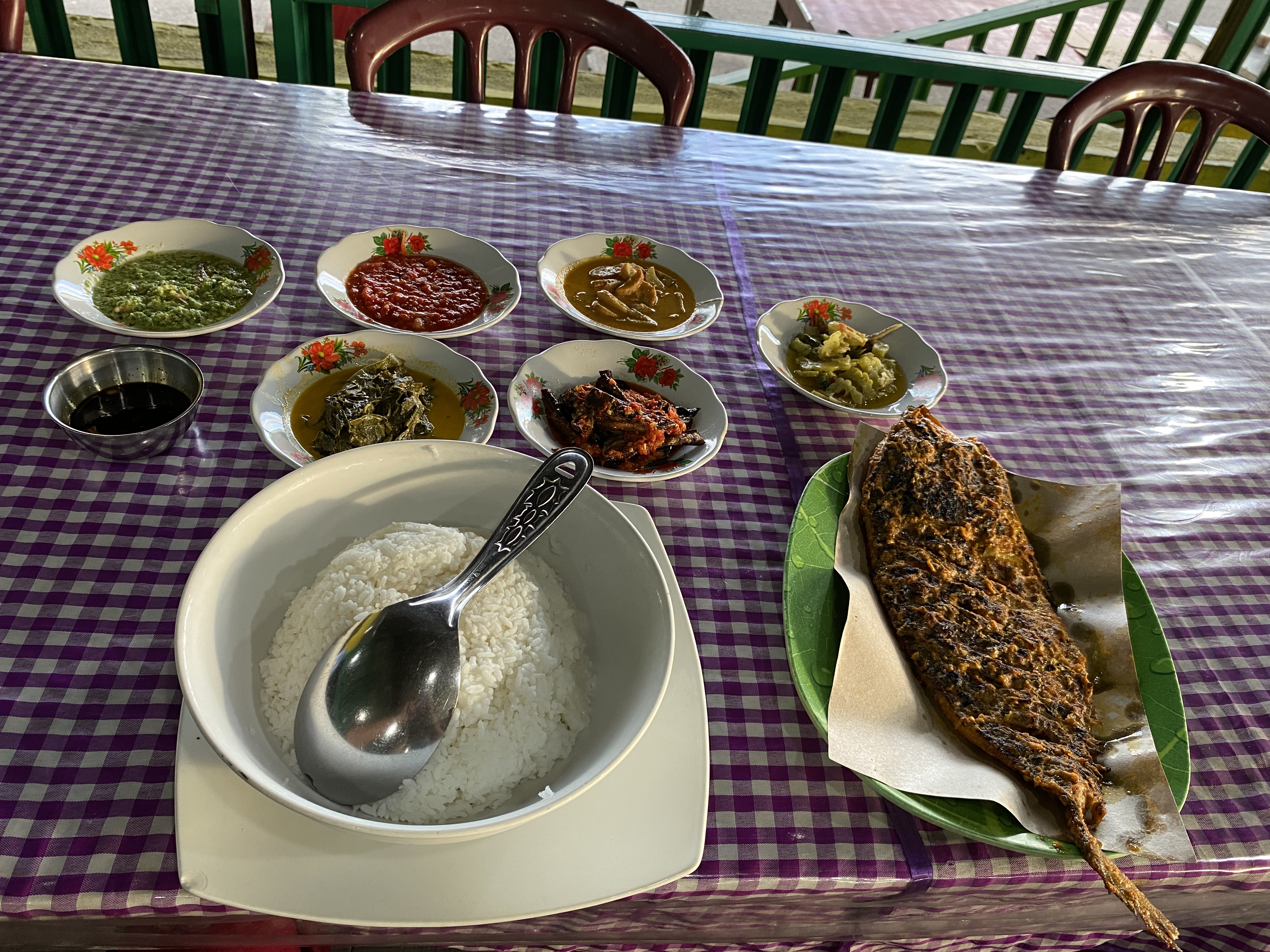
The next morning, Oncy and I got to the harbour, a 4-minute drive from Yani Homestay. The MV Mentawai Fast plies between Padang and Mentawai three times a week – Tuesdays, Thursdays and Saturdays. On its onward journey, the ferry transits at Sikabaluan, the northern harbour of the Siberut island and continues to the southern one, Muara Siberut, which is our disembarking point. A direct journey between Padang and Siberut takes three and half hours while a transit will make it six. The one-hour transit at Sikabluan helped me get my first meal on the Mentawai – fried fish with rice and some veggies.
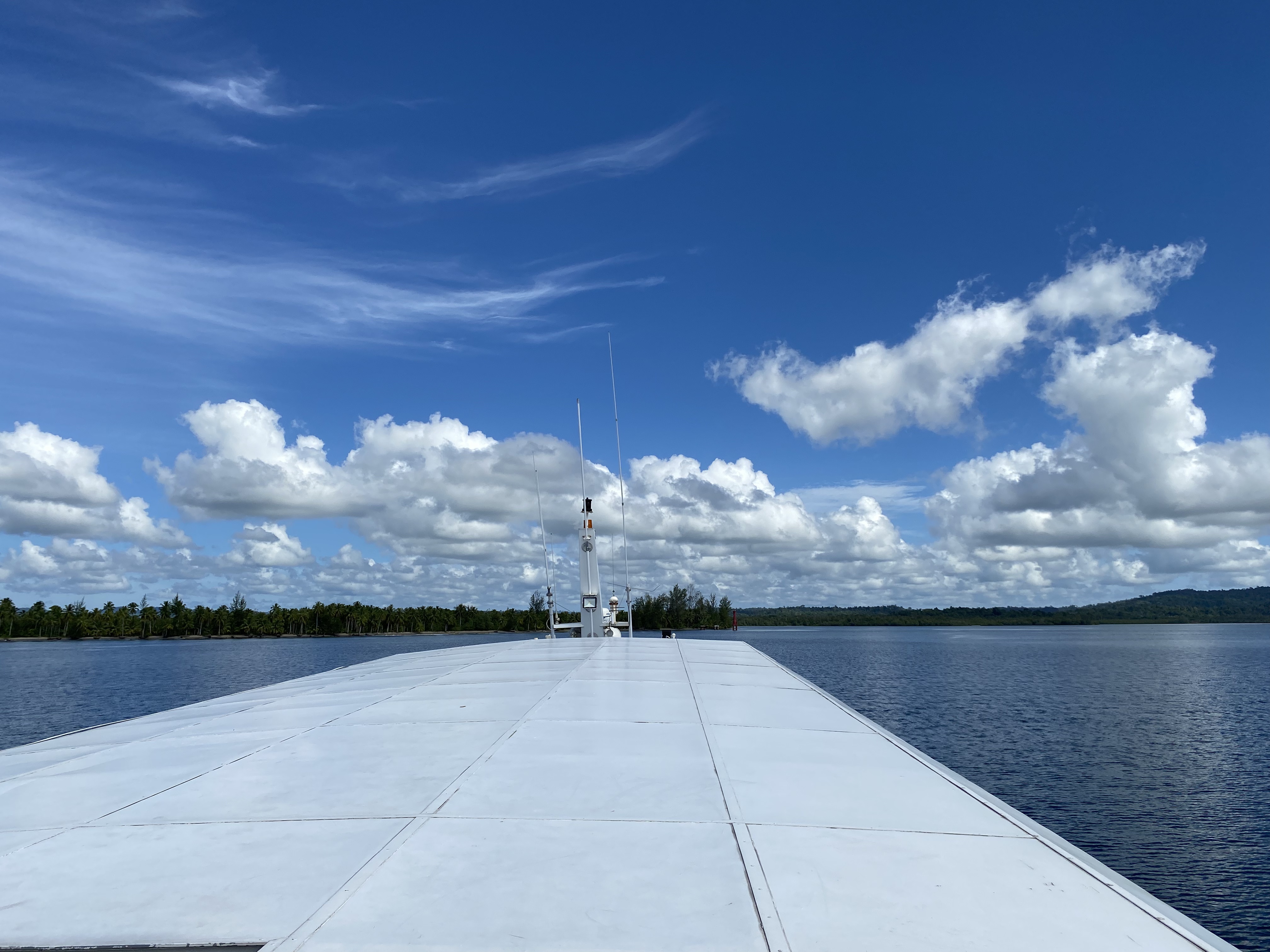
We finally reached Muara Siberut at about 1.30 pm in the afternoon, greeted by the blazing island sun and shops all along the street. There were motor cyclists, all getting ready to lift the tourists to different places. The tourists and surfers who were heading for resorts south of Siberut waited for their speedboat pick up. Oncy, his waiting friends and I hopped on to motor cycles and rode to the village of Muntei on paved, but zigzag country road. We took a bit of a rest at Oncy’s uncle’s Uma (the Mentawai long house) for a few hours. I savoured my first glimpse of the structure of Uma with its painted or carved animal symbols on wooden walls and skulls of hunted animals hung on the ceiling, especially of the pigs. While having tea, four dogs, a few chickens and a cat inspected the new guest and drifted around in the living room. Oncy’s aunt kept driving them away, but the canine household members were persistent until they knew me well. Meanwhile, Oncy and one of the friends rode back to the harbour to buy provisions for the next five days.
Time struck four in the afternoon. Oncy and I walked to the river near the Uma and hopped on to a long and slender motorised wooden boat. His uncle steered us to Oncy’s Uma through the Sungai Siberut in an hour. The river that cuts across the jungle runs from north to south in serpentine twists and turns. Once in a while, you will find small huts on the shore that are designed for pig farming. Pigs are the best form of currency among the Mentawai and possession of a few hundreds is crucial for a man to get married. According to Oncy, a man needs to present pigs, chickens, fruit trees and other goods to the bride’s father. Basically, No money, No honey.
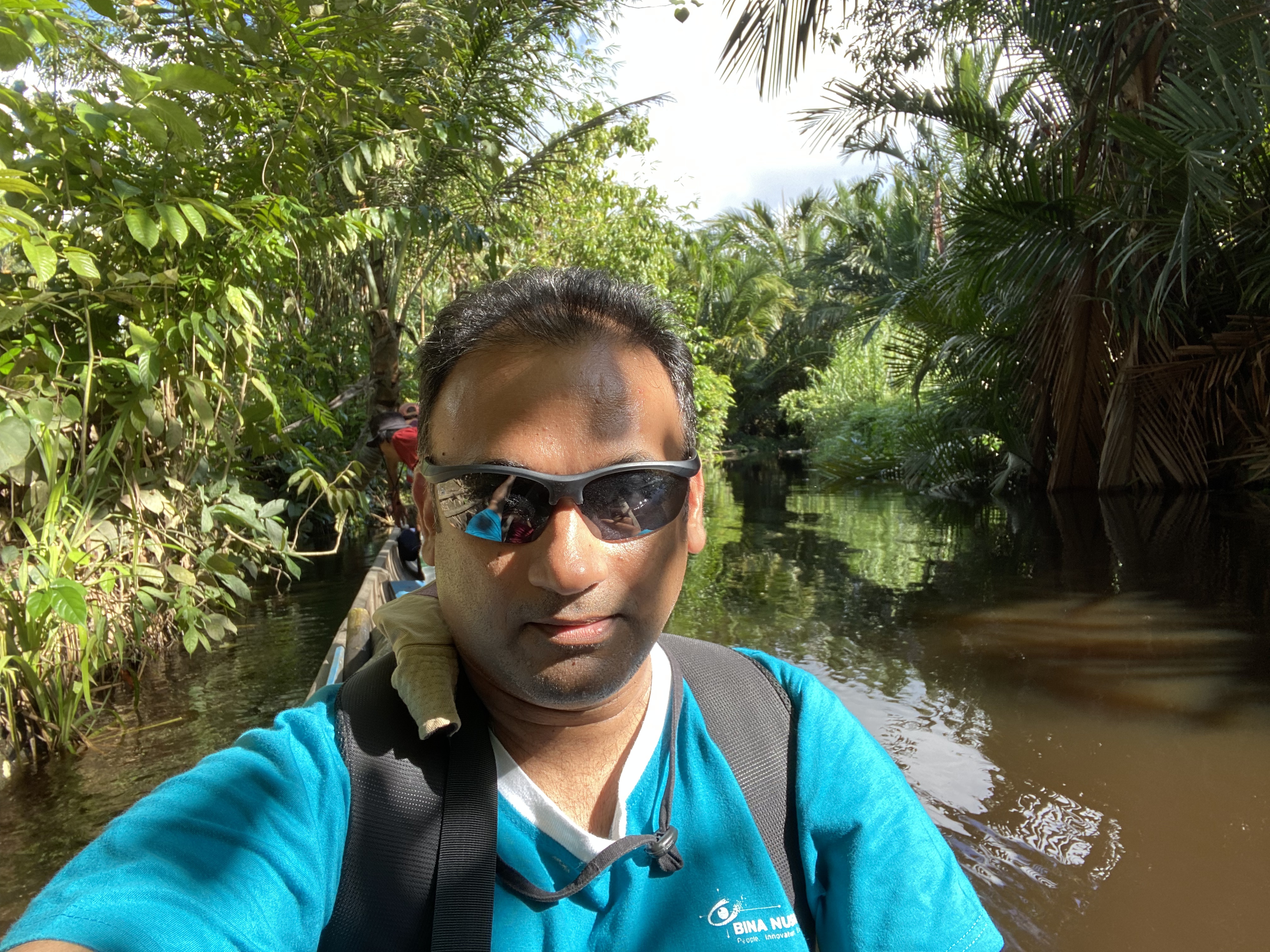
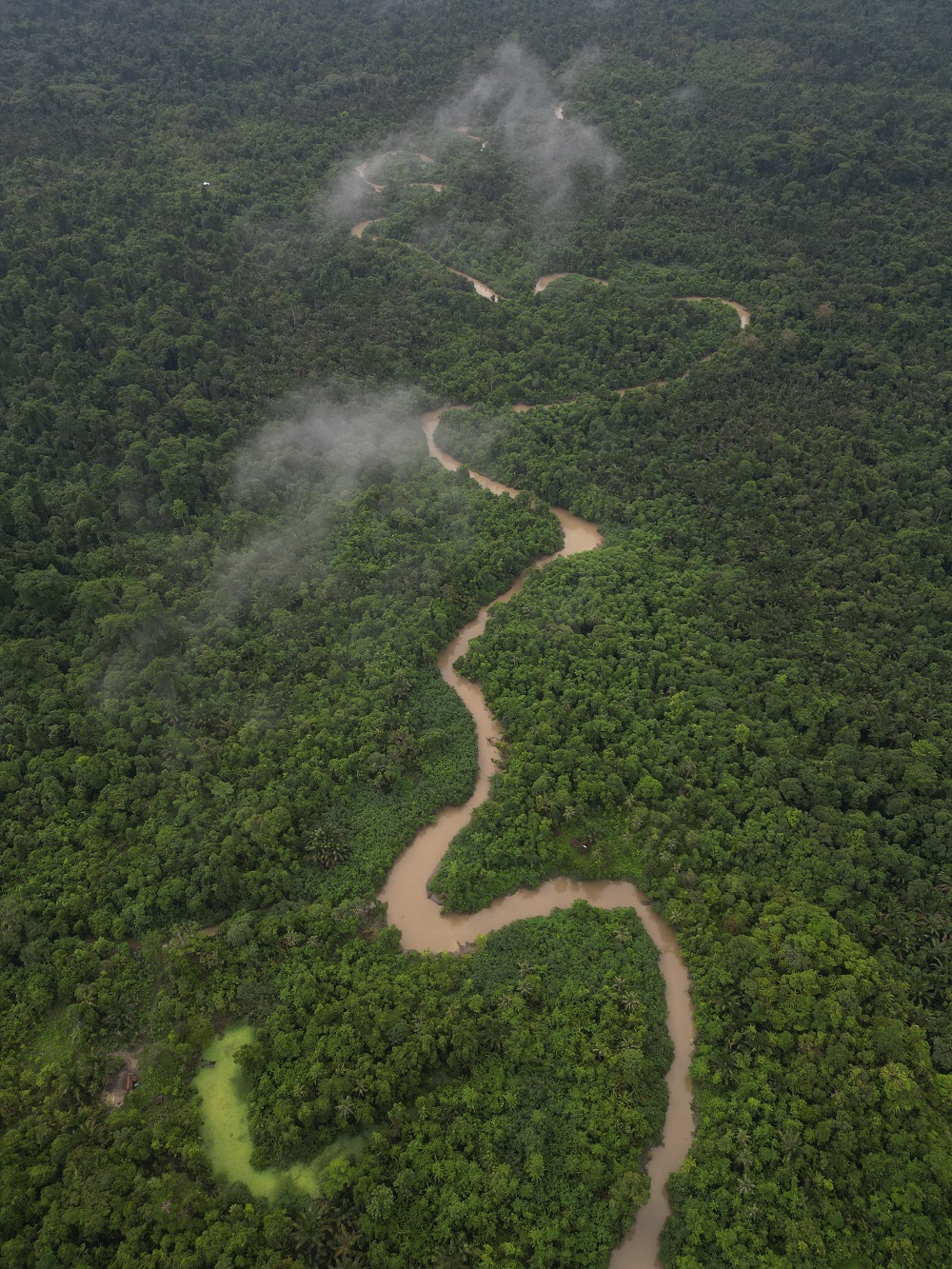
The first test of moving in the jungle came right after getting off the boat. The path between the river and the Uma covers about 500 metres and features at least two bridges (made of tree barks) over rivulets. The rest of the path is covered in wet soil, but is paved with logs here and there, but being cylindrical in shape, you need to balance your feet well. My wellies proved their necessity immensely. And would prove that again, comprehensively in the next few days.
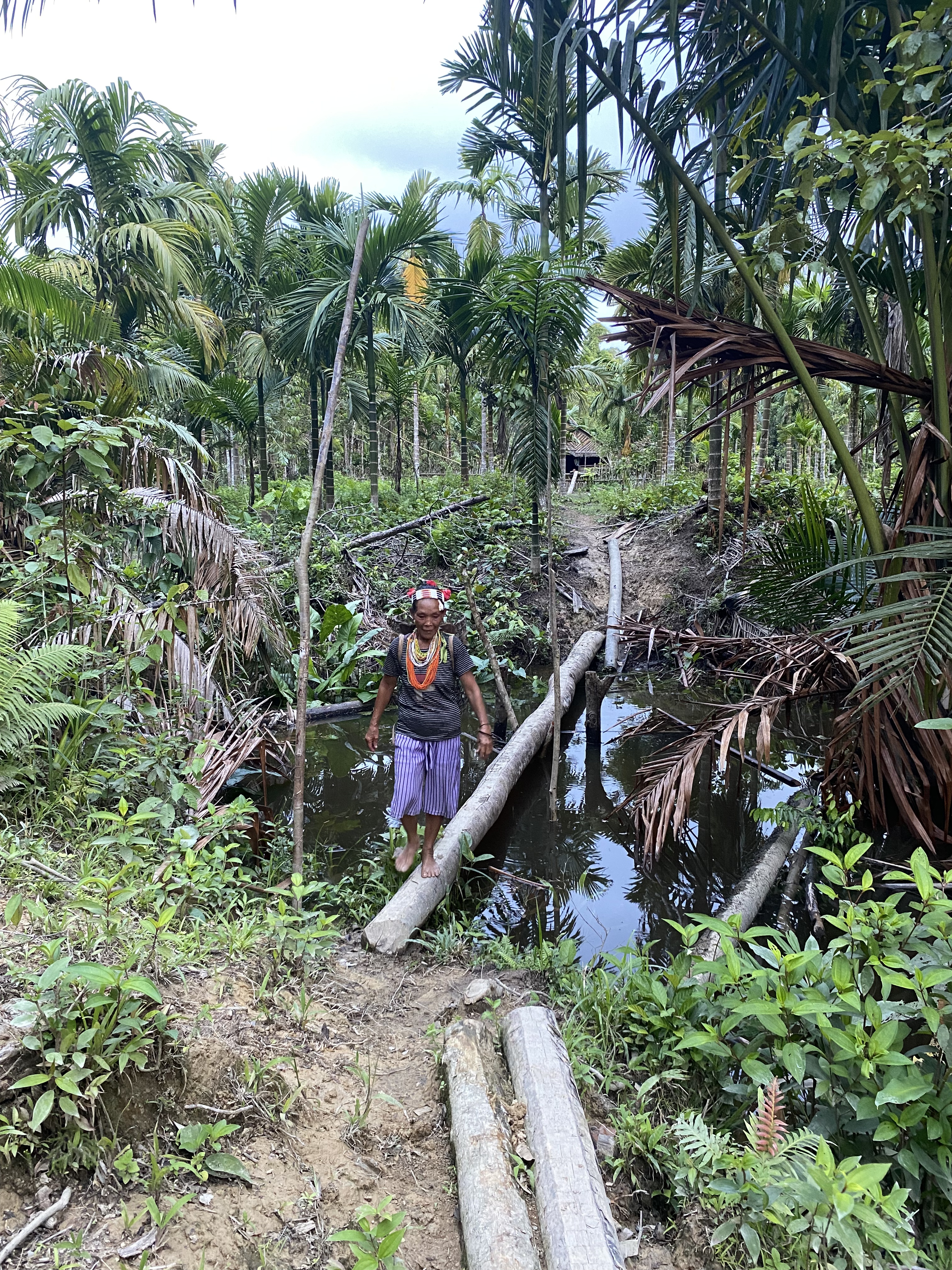
The appearance of three gentlemen in their Mentawai traditional attire was the one that I kept noticing at reaching the entrance of the Uma. There were other ones, the younger Mentawai who wear modern attire, but lead a jungle life nevertheless. But the three men captured all my attention. That was the world I was hoping to get into. The elderly Mentawai women are usually seen bare-chested, but Kela has not reached that senility. While men wore a headband with adorning flowers or leaves, multiple garlands and loincloths, women donned tight-looking skirts, sleeveless tops with headbands. They were smoking, and greeted me to their Uma with a lot of happiness on their faces. It was almost 6 pm and the family were getting ready to prepare their dinner. Kela and a younger woman brought Sago and the others sat in a circle. Slowly, they all started peeling the Sago leaves to get the roasted stick out. Kela offered me the first taste of Mentawai – I had Sago, the tasteless, yet interesting, crunchy, filling staple diet.
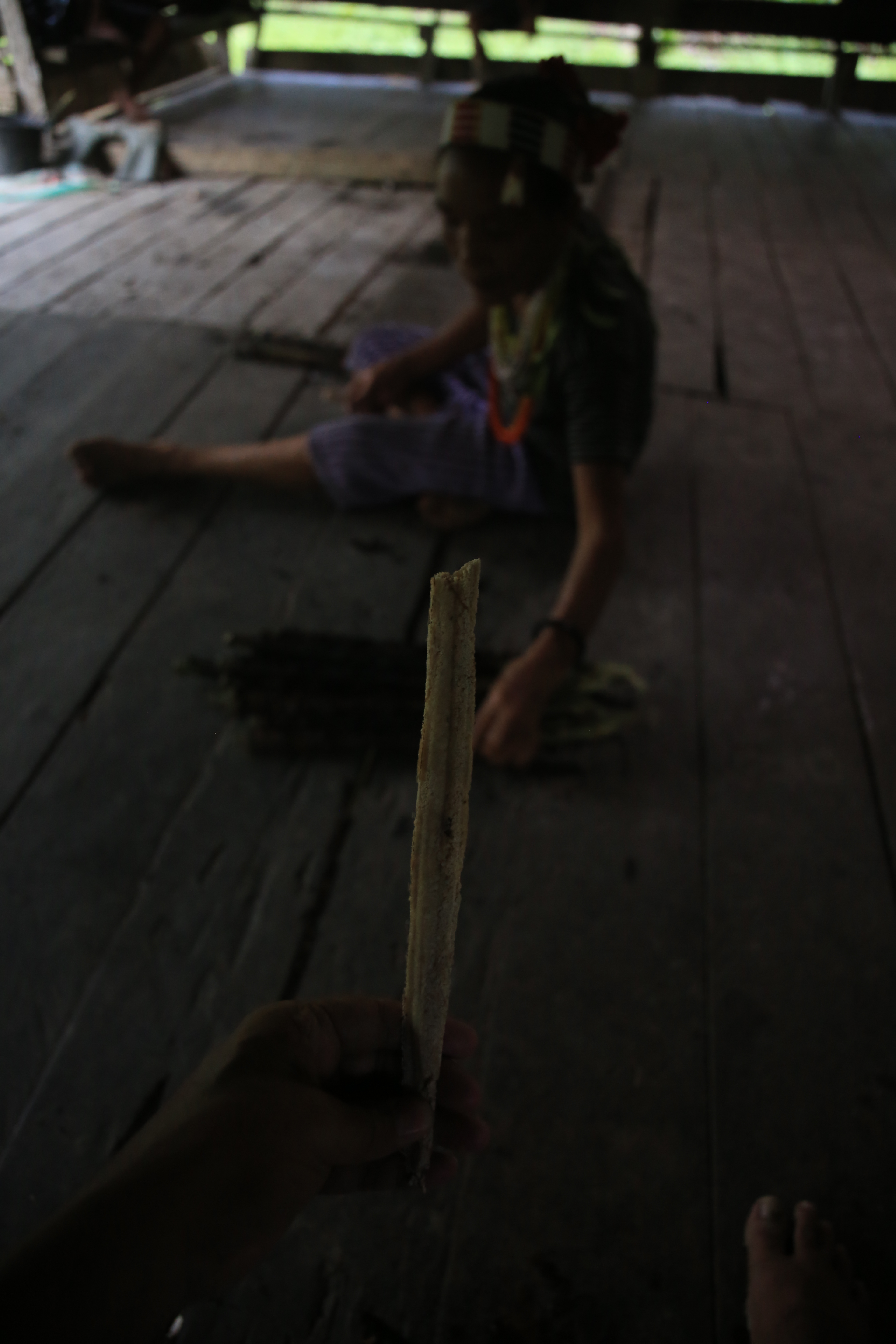
When guests arrive, it is usual for the family to have rice and other dishes. After my first dinner that consisted of rice, fried chicken, fried noodle and some veggies, Oncy and the others prepared mosquito nets for the night. The Uma has three rooms, each separated by triple doorways that are usually not closed though they have separation boards available. In the first room, which is the living room, there is a seating area on the sides with inclining back rest. Six to eight people can sleep here. The second, or the middle room, is slightly longer and has a cooking place right in the middle of it. The last room is a bedroom cum kitchen. At the back of the Uma are two bathrooms with toilets. The water needs to be pumped using a generator that works on solar energy. There are times when there is not enough power available so the crystal clear water in a nearby river is the place to go to for shower.
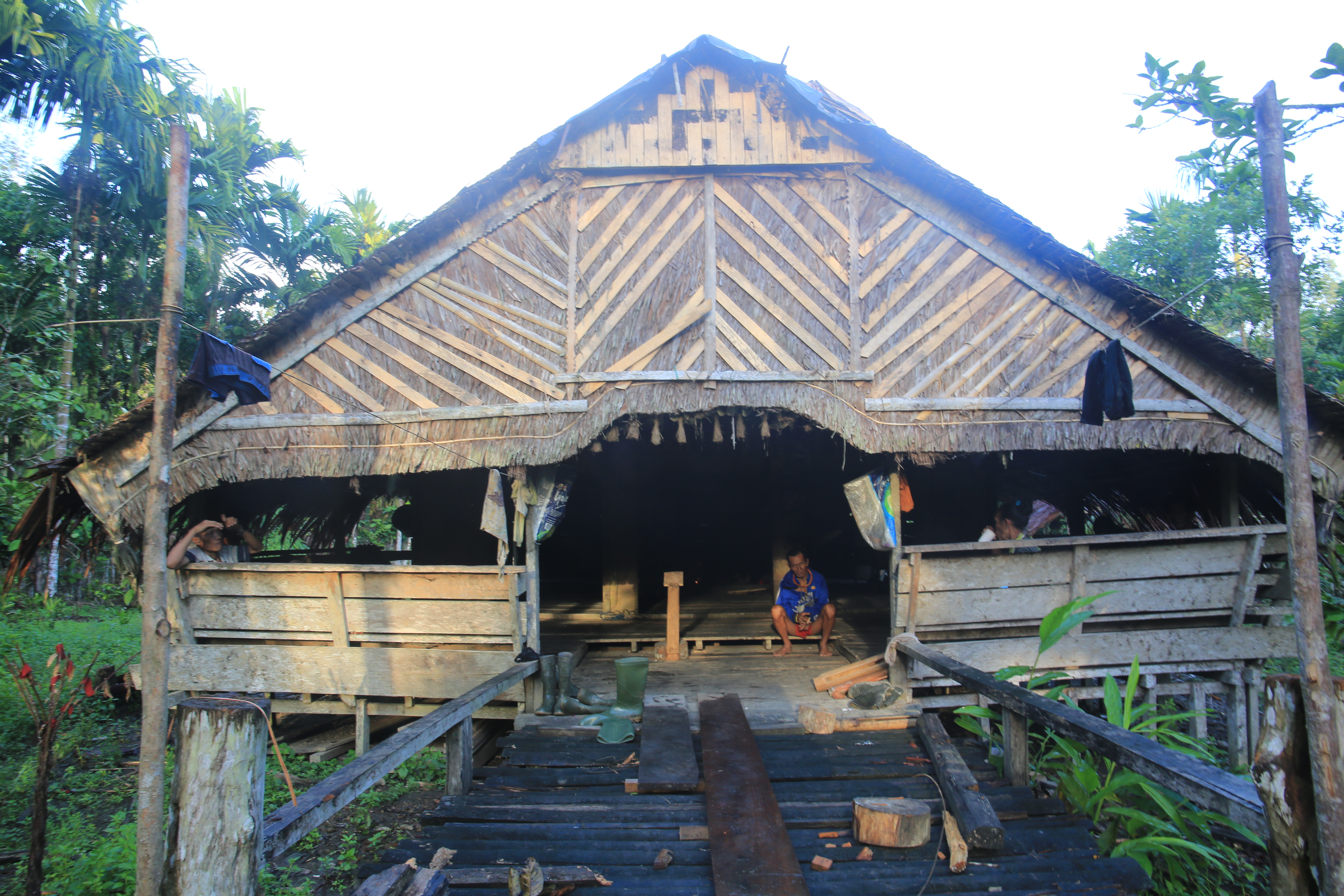
The first morning brought a clear picture of the surroundings of the Uma – covered in deep jungle, with thick vegetation everywhere, short and long trees intermingling in postures that seemed determined by the red earth they stood on. The blue sky and the cotton candy clouds (pardon the cliché) looked closer in appearance. A perfect sunrise in a zero-pollution environment, away from cities and away from kampung as well. The first golden rays beamed straight to the entrance of the Uma. I kept admiring the soft light falling on Cairo, one of the three elderly gentlemen who was sitting on his haunches and taking a puff.
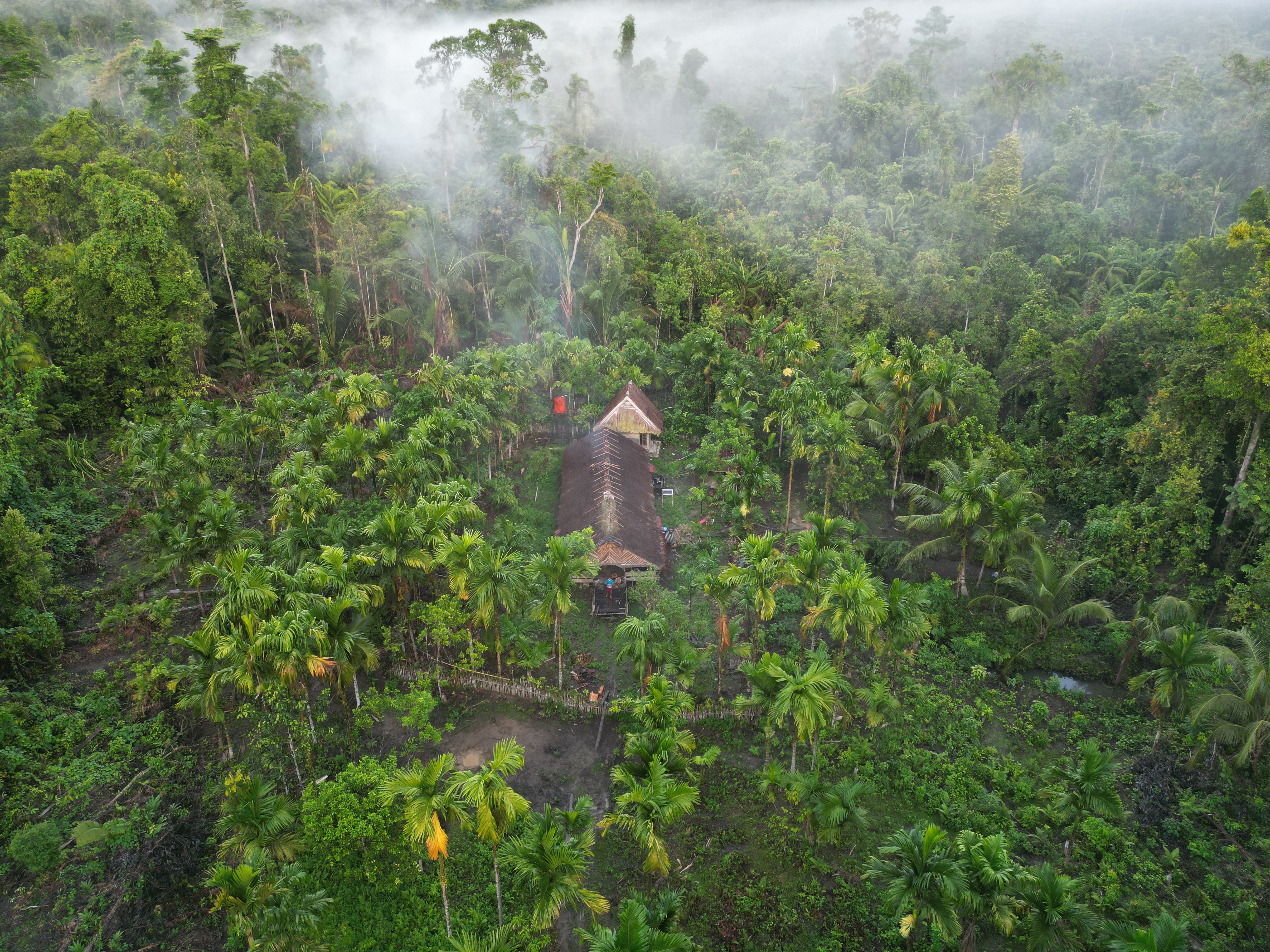
After breakfast, Oncy and I went out trekking with the three gentlemen, looking for materials to make loincloths. A few hundred metres away from the Uma, the men stopped at a tree called Baiko. They cut the bark, then on the ground, the three of them started to peel the skin off. Once they got the skin, we walked further to the nearby river where we found positions to sit on the pebbles. The river is rather shallow during summer season and had only shin-deep water. Then the men started beating the skin with bamboo sticks. When beaten in the water for about 10-15 minutes, the skin turns soft. We then brought all the beaten skins to the Uma and hung them with the laundry to be dried. This will be ready for use once completely dry.
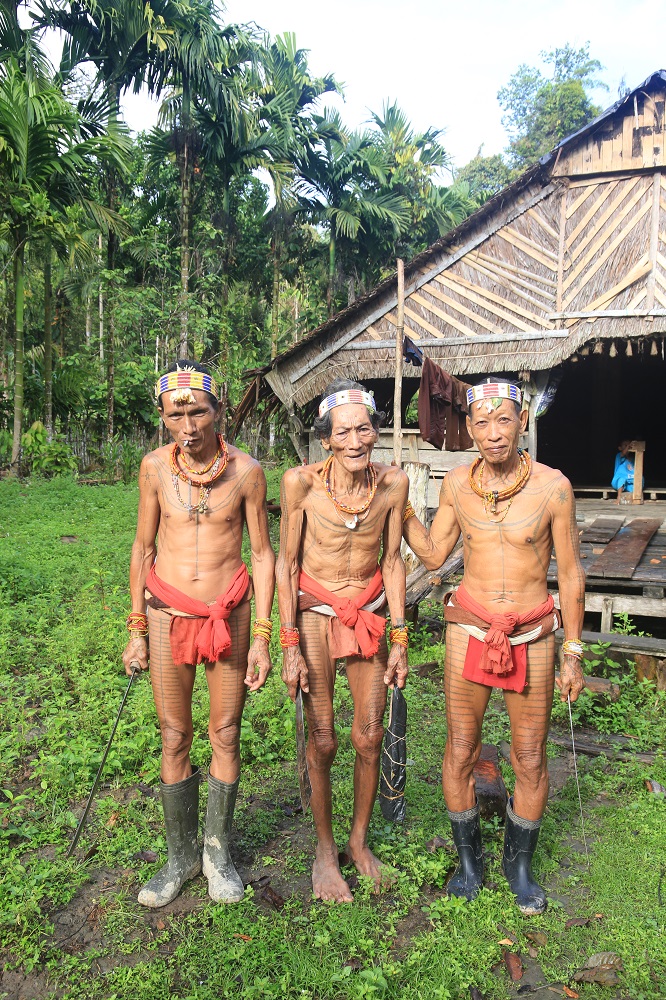
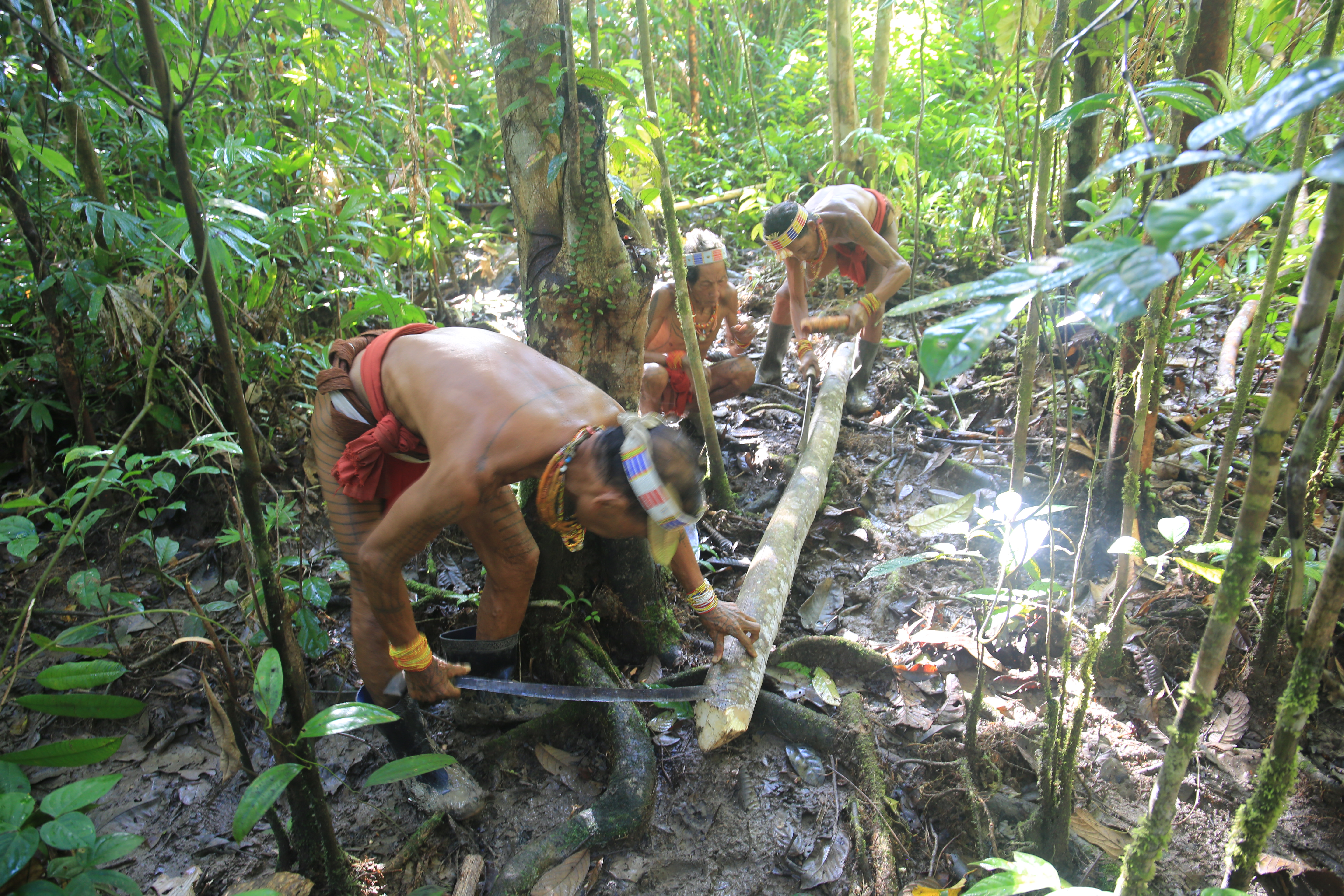
The rest of the day was all about sitting in the living room, listening to the family conversing cordially in Bahasa Mentawai which has some words from Bahasa Indonesia and the rest their own. Kela’s daughter, a young woman probably in her late twenties or early thirties just came back home carrying wooden logs in a basket. The logs are used to make fire for cooking. The men, the elderly and the young ones kept smoking and chatting. I used the time to photograph them and look around.
The next morning was time to collect Sago. Oncy told me that we would have to venture a bit farther away than yesterday. So, we headed in a different direction this time, trekked for about 20 minutes, then the path started posing certain challenges for me, not for the elderly nor for Oncy. My feet started dipping into the wet soil. Each time it did, I had to pull out my leg. After a few struggles, my green wellies turned into a muddied artwork, transforming my legs into cumbersome goods to be carried forward. Oncy realised the situation quickly and asked the three men to find a nearby Sago tree rather than searching far and wide. So they did and cut some barks. The men also collected the Sago tree larvae which is one of the Mentawai diets. The larvae are collected and roasted at home.
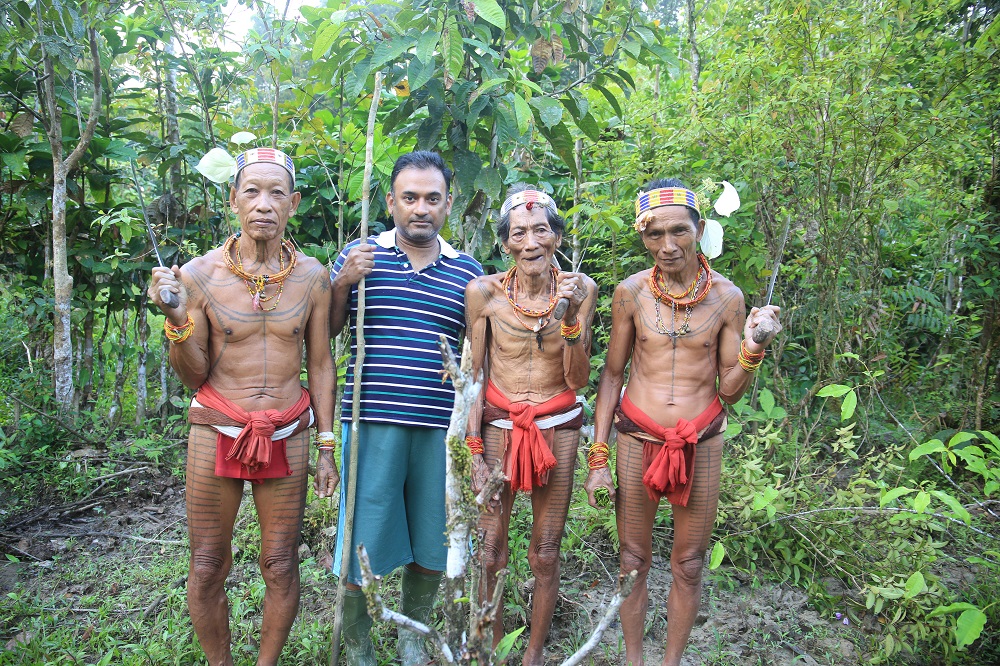
Back in the Uma, the women started preparing the sago dish. They sat in the inner kitchen, poured the powdered Sago into the Sago tree leaves and knotted them. Once all the knotted leaves with the Sago powder in them were ready, they fried them in the fire. Within a few minutes, Sago was ready to be eaten.
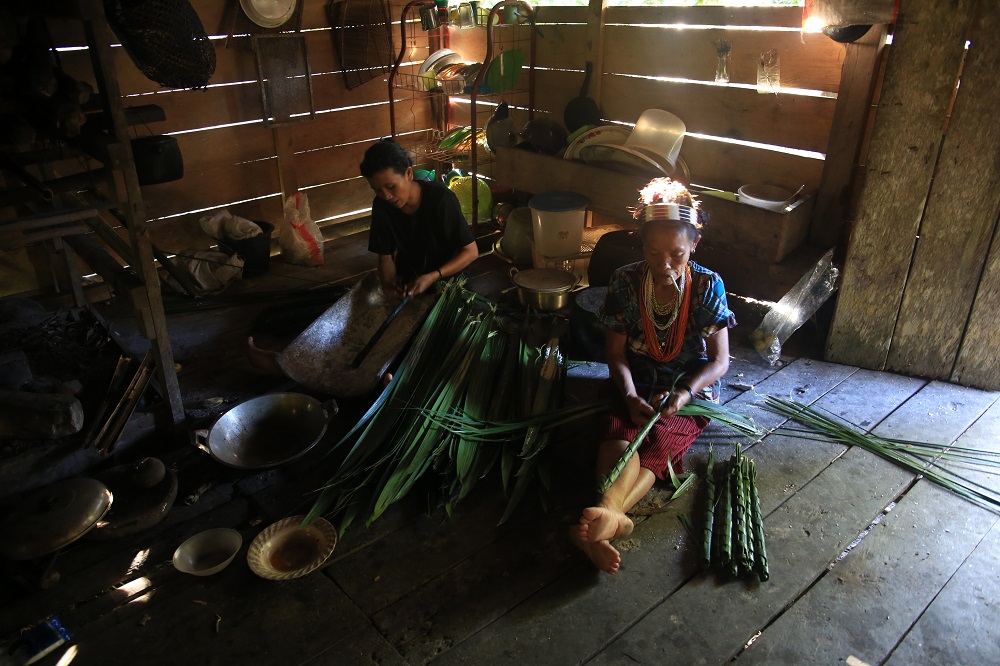
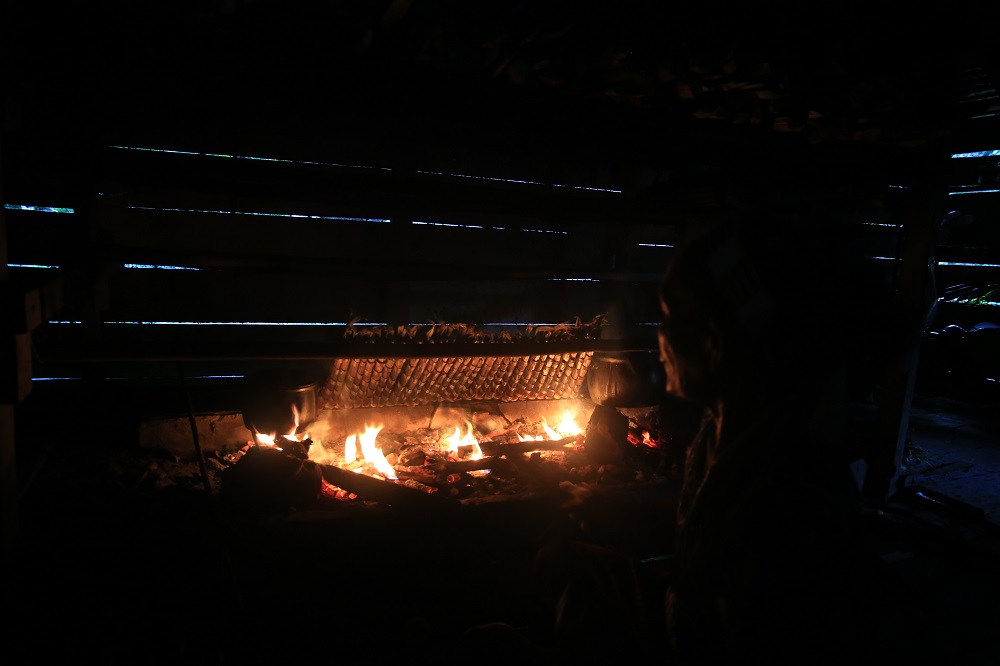
The Mentawai depends on Sago for their daily food. Pigs and chickens are only slaughtered during occasions or when they have guests. Occasional bird or squirrel catches may add to Sago as do fish catch from the river. Kela and her daughter showed me how they catch fish from the nearby river using netted baskets. Women often wear a skirt made of Sago leaves to fish in the river as the colour green can attract the fish.
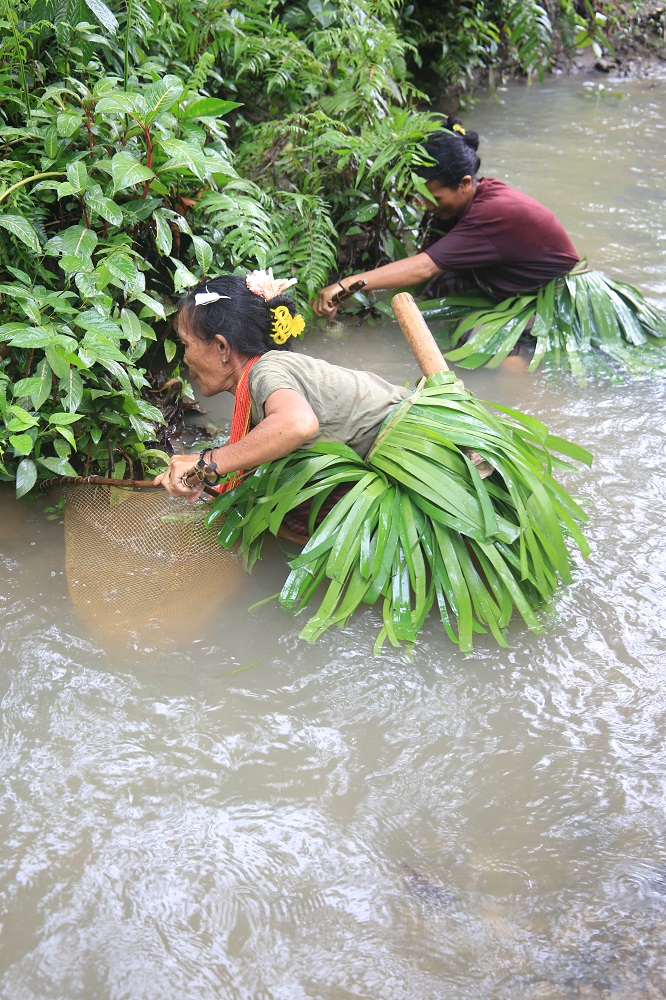
The nights were often warm inside the Uma, especially while sleeping inside mosquito nets. The mats and cushioned mattress are spread on the wooden plank floor. After my second night, I got used to the new bedding. One night, around 12, I got awakened by a Bollywood song, and for a moment, I couldn’t believe my ears. I saw the youngsters changing radio channels on their phones. Without television and proper phone connectivity, radio is one of their best friends. Having lost sleep for a moment, I decided to go to the toilet at the back of the Uma. I used wellies as the path was wet after rain. When I stepped out of the Uma, I looked above to see the millions of stars and the crescent moon in a totally unobstructed view. I switched off my flashlight, positioned myself safely in that pitch darkness to get an even clearer view of the galaxy as I would never in cities. That was a world apart. The moon and the stars above the jungle. It reminded me of a similar time I had enjoyed while staying in a boat on the Komodo island in Flores.
The overnight rain left mist on treetops early morning. I flew my drone to survey the weather and the capture the fog with the distant clouds in the background. I could also see the artery of the Siberut river that we had sailed on to reach here.
Breakfast done, it was time again to trek in the jungle with the elderly men. Today was a day I was looking forward to. The men had promised to show me how to poison arrow tips to kill monkeys, deer and other animals. But first, we had to get back into the jungle to collect some particular leaves. There are three kinds of leaves – Raggi, Laingi, Baklau and a variety of chilli called Dara – the mixed juice of which is used to smear the arrow tips. Sometimes only two leaves are mixed, sometimes all the four, depending on the animal they wish to kill. Each animal requires a particular amount of dosage and a particular mixture. After collecting the ingredients, we came back to the Uma. Piro, Teleng and Cairo started mixing the leaves, squeezed the juice out of them and mixed them in a wooden bowl. They smeared the potion on the arrow tips and heated them in fire. The arrows were ready to be used. I looked at the hanging skulls of pigs, monkeys and deer in the middle room. The monkeys and deer live a bit far away. They are only hunted during special occasions like marriage.
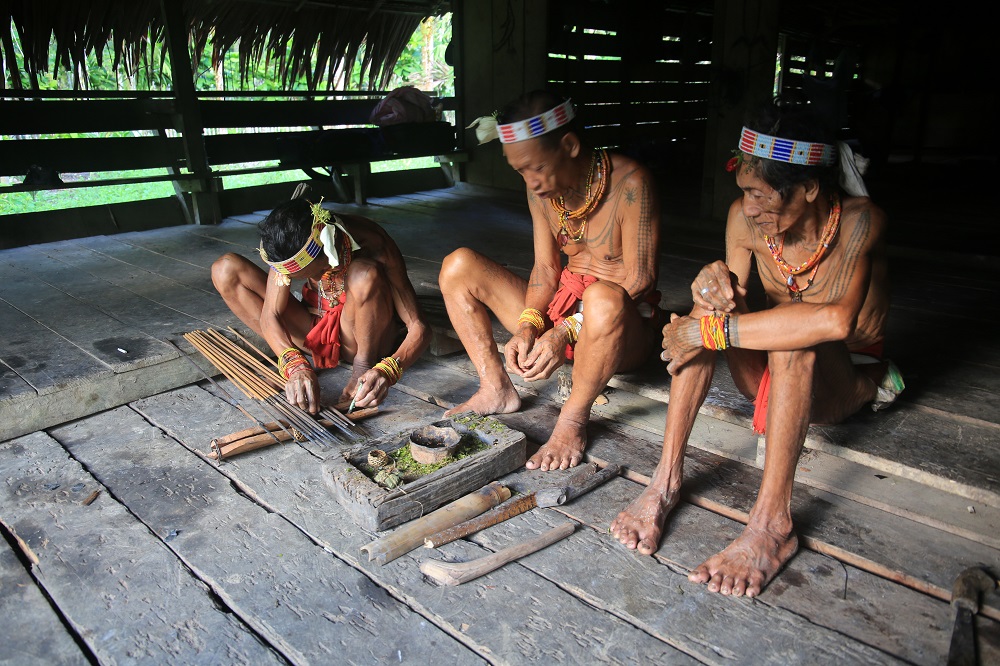
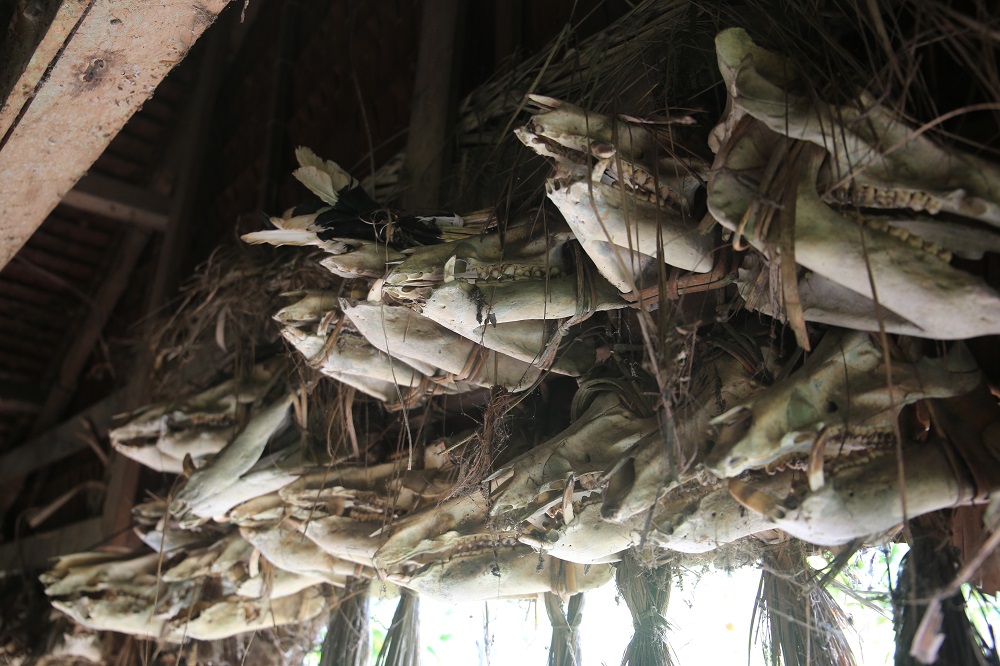

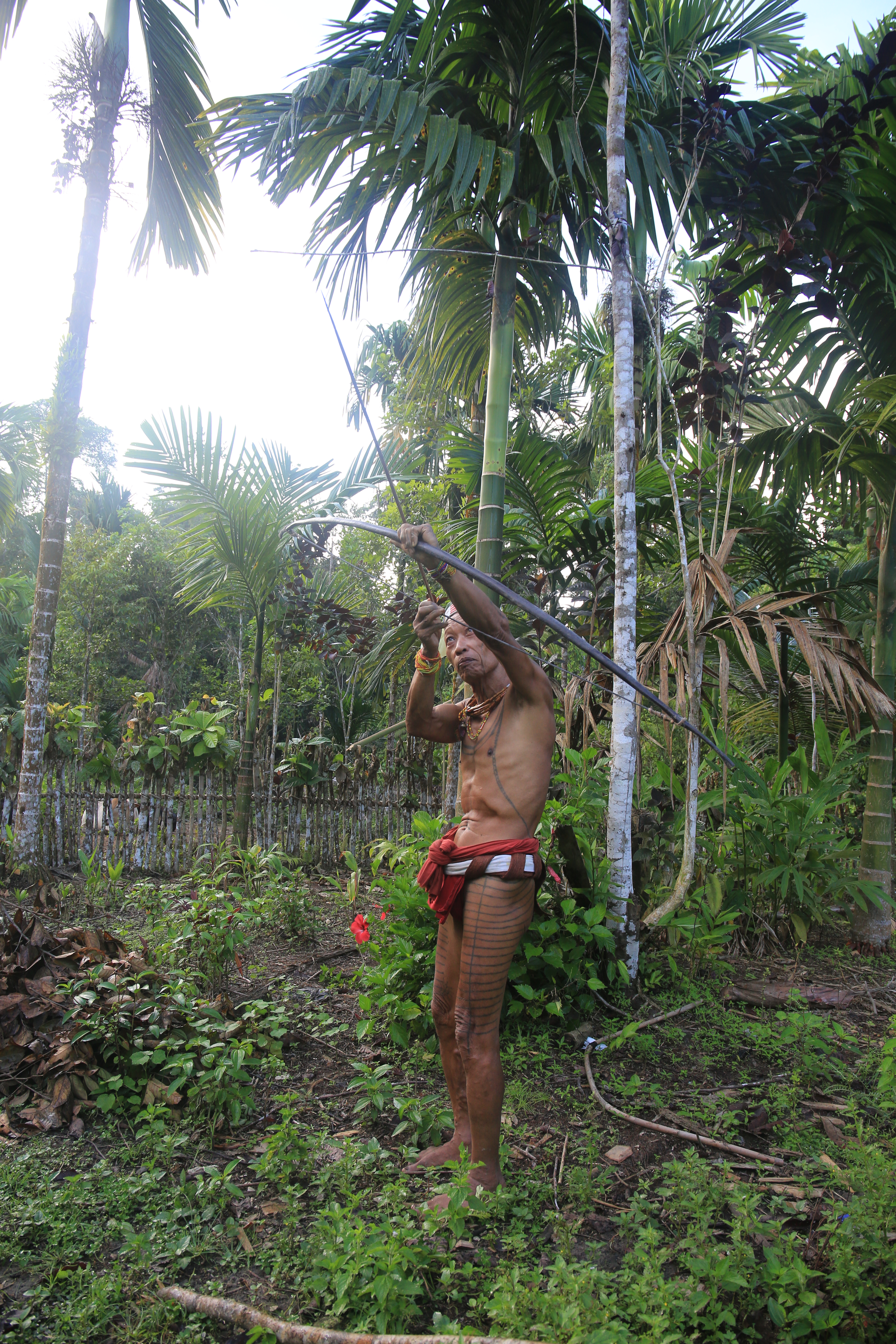
I woke up early on the final day to witness the cool and clear air. The hanging mist and the golden rays mingled well to signal good weather for my journey back to Padang. I shook hands with every household member in true Indonesian style and left half of my clothes and my wellies so anyone in the Uma who needs them can make use of them. What I will savour the most is the way of life that I have experienced. It is very ritualistic and has a proper order. The times of the day, the night have unwritten schedules that everyone follows in the Uma. Time for meals, time for getting into the forest, time for activities. All follow a cycle like the 24 hours of a day do.
The tribe follows an animistic belief called Arat Sabulungan which considers nature as the supreme being. Everything in nature has a respectable life and needs to be respected. When they take a thing from nature, they ask for its permission, whether it be Sago or a pig. After the animals are slaughtered, they ask for nature’s forgiveness and thank nature for the food it has provided.
The Mentawai are nature’s scientists, self-taught like all animists are. They maintain an age-old tradition in the best ways possible. Their life follows a rhythm created by nature. There is no room for confusion in daily life, but there is an all-pervading sense of camaraderie with nature and among members of each family in different Umas.
As I was preparing to return to Muntei village on the last morning, I heard Teleng’s chanting which starts with a low pitch ‘oooo …. ooooo’, rising to a slightly higher one, ending abruptly with a single ‘O’ sound. The chanting is also a way to communicate with nature as it carries some sort of spiritual connection that only the forest dwellers can understand.
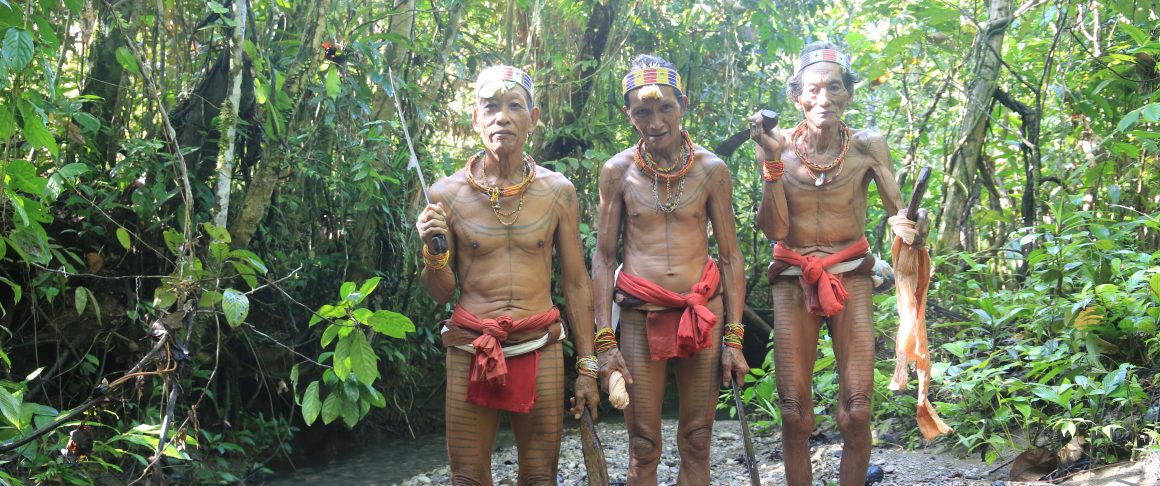
👍 keep up the good work.!
LikeLike